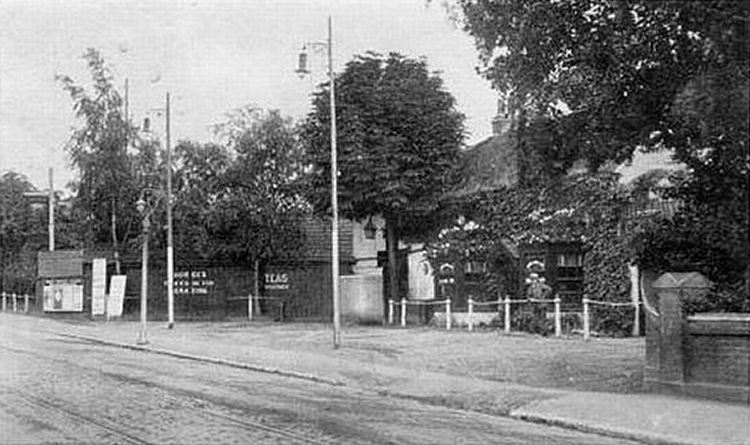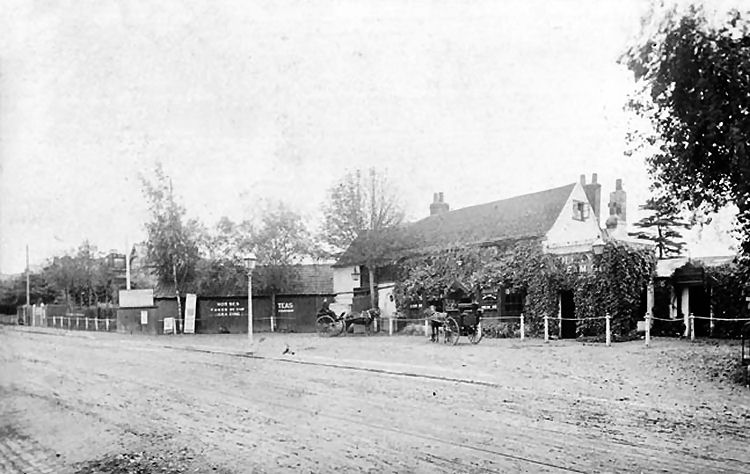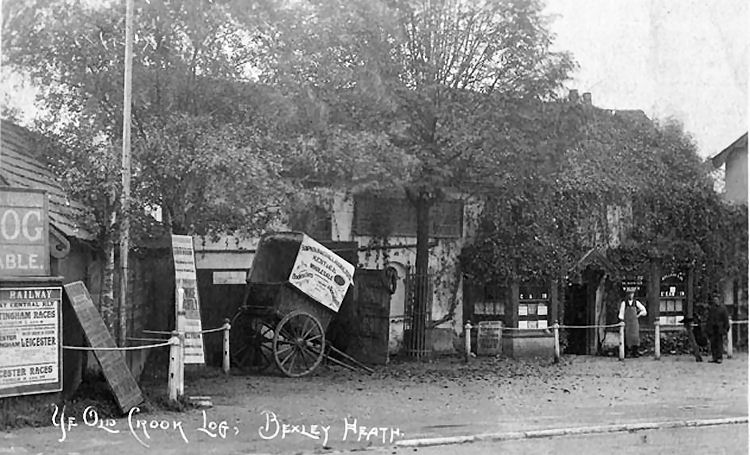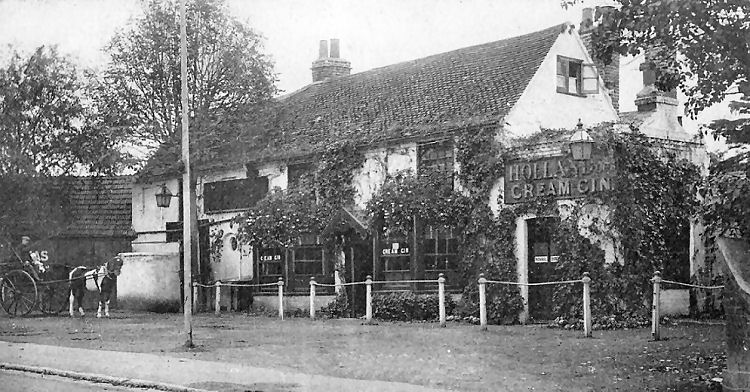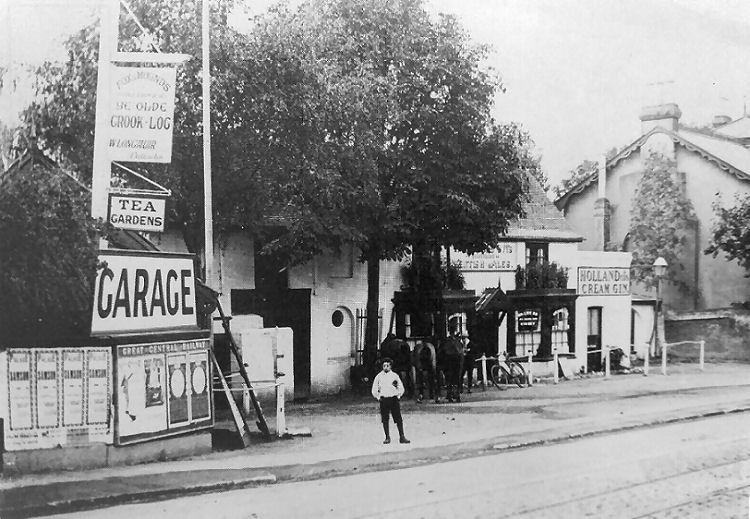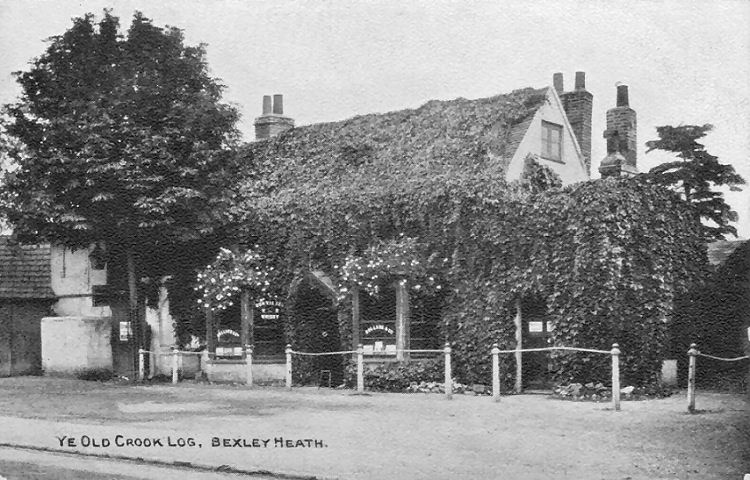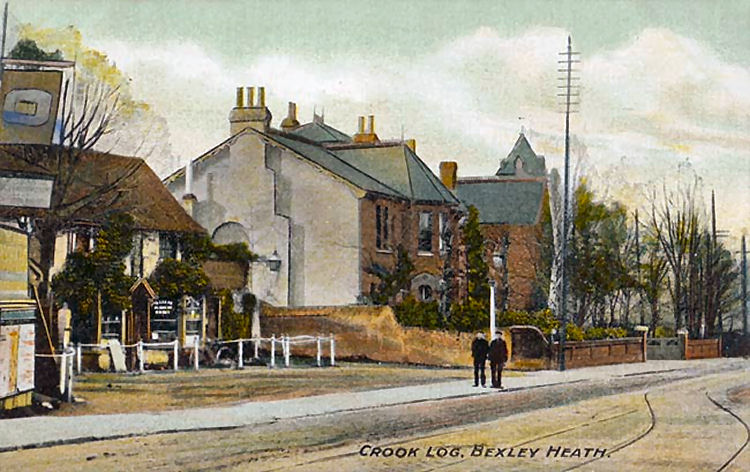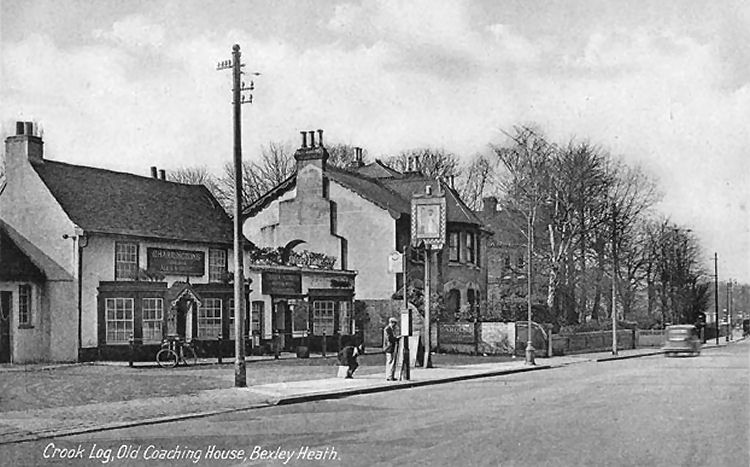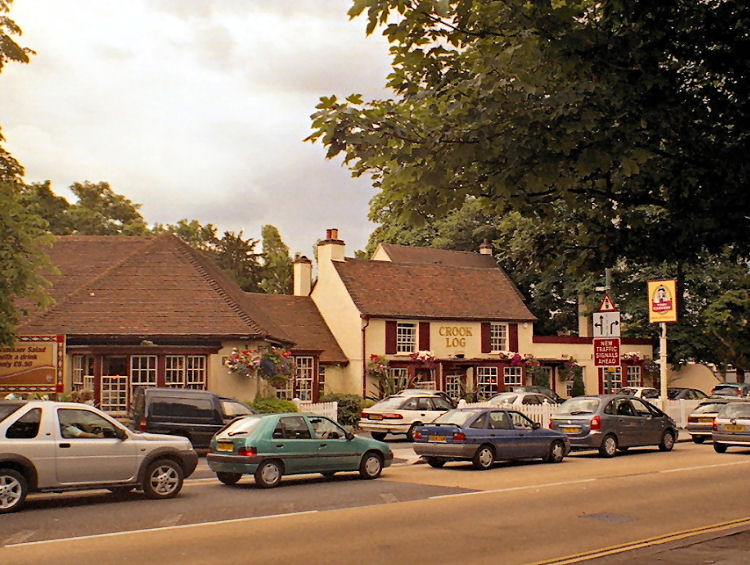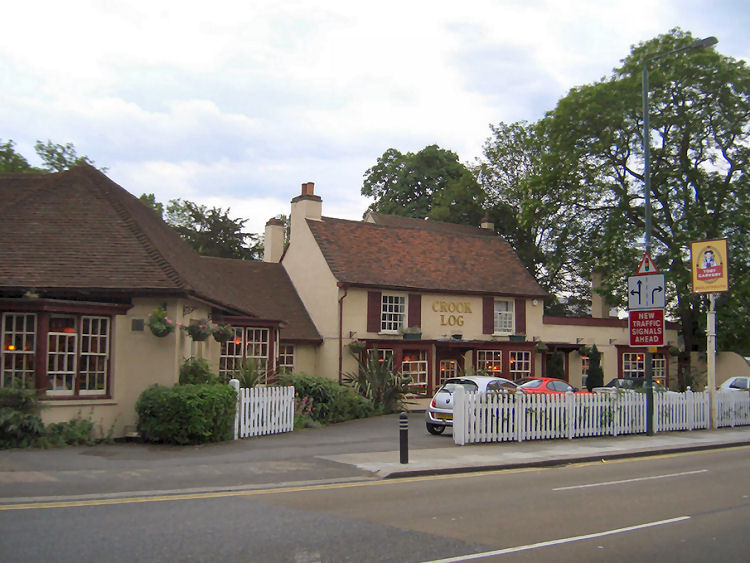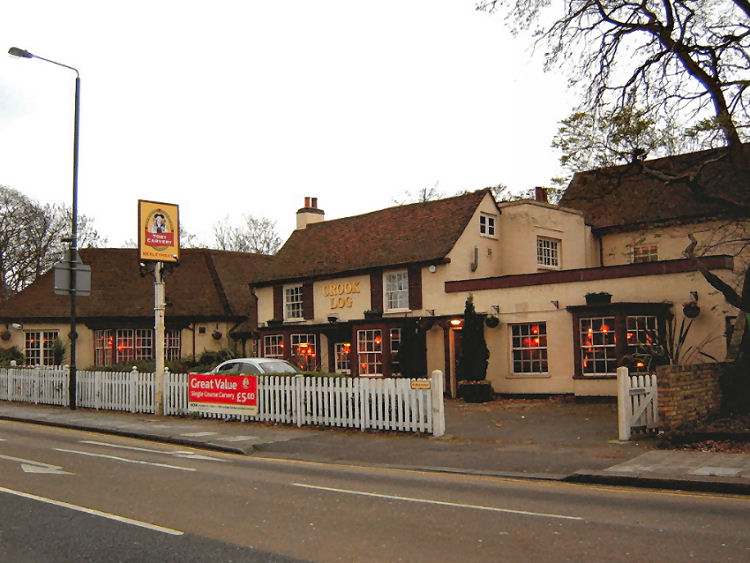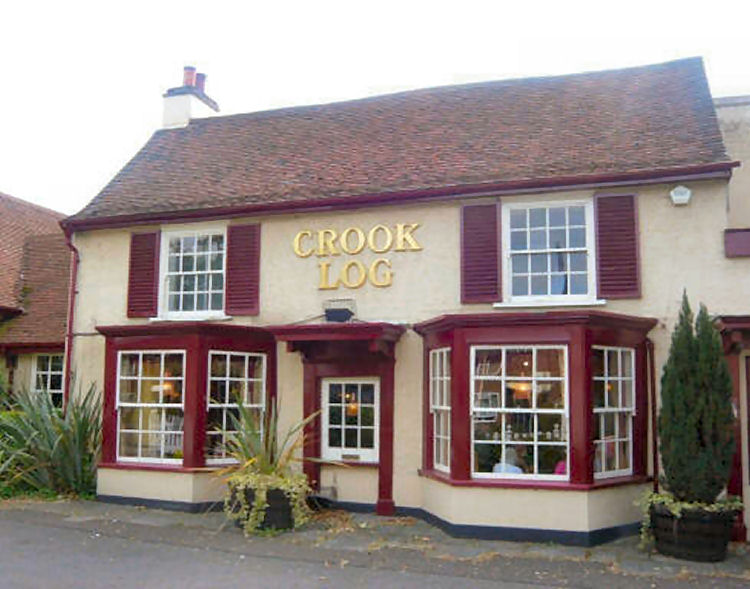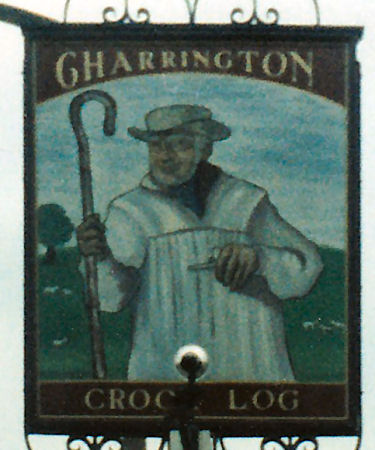Sort file:- Bexley, October, 2025. |
|||||||||||||||||||||||||
Page Updated:- Saturday, 18 October, 2025. |
|||||||||||||||||||||||||
| PUB LIST | PUBLIC HOUSES | Paul Skelton | |||||||||||||||||||||||
|
Earliest 1605 |
Old Crook Log |
1822 (Name to) Open 2009+ |
|||||||||||||||||||||||
|
39 Crook Log / Watling Street Bexley Heath
The Crook Log can be traced back in the Bexley rate books to 1808, although a reference to Crook Log House on a list published by the New Cross Turnpike Trust in 1738 may mean this public house was in existence even earlier than the "Golden Lion." It is said that the area south of the road as late as 1609 was wooded and cut wood from here was sold as firewood in the City of London. The pollarded trees became "crooked logs" timber much sought after for ship building. Thus when a hostelry was built it took the name the "Inn at the Crooked Log." The name Crook Log first appeared in 1654, when Thomas Cawstin who was a wheelwright of Welling, bought some land including "Crook Log or Taylehangers". The same name, is found in a Survey of Bexley Manor made in 1681, while in an earlier survey of 1608 the place is called simply "Talehangers". Originally the district was thickly wooded and would have been a valuable product for wheelwrights. Between 1608 and 1654 the name Crook Log began to replace the word Tailhangers but the place referred to was still the same, the old name was replaced by Crook Log, possibly because of a distinctively-shaped piece of timber left by the last cutters of firewood. Charles Dickens gave this pub a mention in his 1859 novel "A Tale of Two Cities" but it is believed the pub was well established as early as 1738 and some say built in 1605. Situated along the Watling Street the pub was renamed in 1822 to the "Fox and Hounds," although the name "Crook Log" seems to have continued, probably by the locals who knew it as that before the change and by 1898 it went back to the "Crook Log" again. Has also been referred to as "Ye Old Crook Log" and the "Old Crook Log." The 1891 census addressed it as at Main Road, Bexley Heath, and the 1901 census at 39 Crook Log. The 1895 publication of the Dover Road, by Chris Harper calls it the "Crook Log":- "The ’Old Crook Log’ inn is the only houses here that has a history of more than fifty years’ length, and this roadside public-house is remarkable, not so much, perhaps, on account of its age - which is indeed, very considerable - as by reason of the curious bid for custom the landlord makes of holding a free Natural History Exhibition of live birds and animals in his back garden, where monkeys, peacocks, owls, cats, canaries, bats, foxes and others lead wretched lives, stived up in small cages, and create an effluvium whose strength must be smelt to be believed."
LICENSEE LIST
TURNER John 1841+ (age 57 in 1841
LONGMUIR W 1907+ SUNDERLAND Charles 1913+ https://pubwiki.co.uk/CrookLog.shtml
|
|||||||||||||||||||||||||
|
If anyone should have any further information, or indeed any pictures or photographs of the above licensed premises, please email:-
|
|||||||||||||||||||||||||
| TOP |
|
|
|||||||||||||||||||||||
